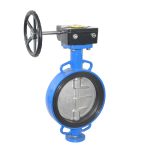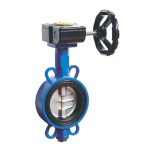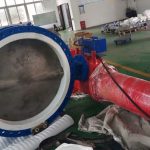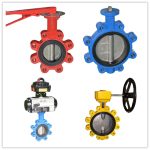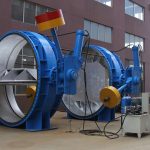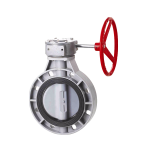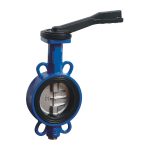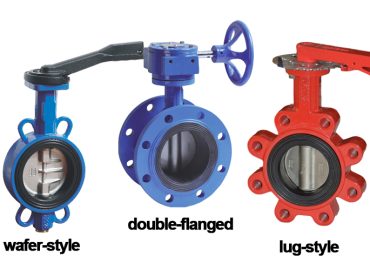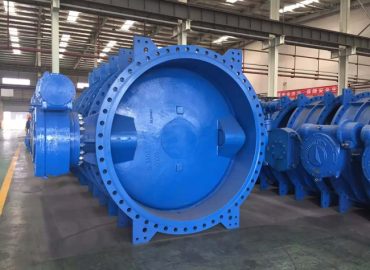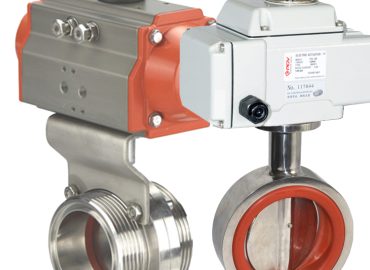Butterfly valves are commonly used in various industries and applications, thanks to their efficient flow control capabilities and ease of use. One of the critical components in butterfly valves is the valve seat, which plays a crucial role in ensuring proper sealing and valve performance. Choosing the right material for butterfly valve seats is therefore critical to ensure optimal valve functionality and longevity. In this blog post, we’ll explore some of the common materials used in butterfly valve seat material manufacturing, as well as the factors that should be considered when selecting the right material for specific applications.
Introduction
Butterfly valve seat material can be made from a range of materials, each with its unique properties and advantages. The choice of material depends on various factors, such as operating temperature range, pressure rating, chemical compatibility, wear resistance, and cost. Elastomeric materials are commonly used in butterfly valve seat manufacturing, including natural rubber (NR), ethylene propylene diene monomer (EPDM), nitrile rubber (NBR), and fluoroelastomers (FKM). NR provides excellent flexibility and resilience, making it suitable for low-pressure applications. EPDM offers good chemical resistance and can withstand temperatures up to 300°F, making it suitable for applications involving steam and hot water. NBR is oil-resistant and ideal for high-pressure applications, while FKM is ideal for applications that require high-temperature and chemical resistance. Thermoplastic materials such as polyvinyl chloride (PVC), polypropylene (PP), and polytetrafluoroethylene (PTFE) are also widely used. PVC is inexpensive, lightweight, and can withstand acids and bases, making it suitable for applications involving corrosive fluids. PP is more rigid than PVC and has excellent chemical resistance, while PTFE offers superior chemical resistance and can withstand high temperatures. Metallic materials such as stainless steel and alloy-based materials like Inconel and Hastelloy are also used in butterfly valve seat manufacturing, especially in high-pressure and high-temperature applications. Stainless steel is highly durable, resistant to corrosion, and can withstand high temperatures, while alloy-based materials offer exceptional resistance to extreme temperatures and corrosive fluids. Overall, the selection of the right material for butterfly valve seats depends on the specific application’s requirements, and it is essential to consult with industry experts and valve manufacturers to ensure optimal material selection.
Brief introduction to butterfly valves and their applications
Butterfly valve are widely used in various industries, including chemical, petrochemical, oil and gas, water treatment, and HVAC systems. They are popular due to their ease of use, efficient flow control, and cost-effectiveness. Butterfly valves consist of a circular disc that rotates around an axis perpendicular to the direction of flow. The disc can be turned 90 degrees to either allow or restrict fluid flow. Butterfly valves are suitable for both on/off and throttling applications, making them versatile and widely used in different industries. Their compact design, lightweight, and low-pressure drop make them ideal for large diameter piping systems where space is limited, and energy conservation is essential. In addition, butterfly valves can be operated manually or automatically through electric, hydraulic, or pneumatic actuators, making them highly flexible and adaptable to different systems’ needs.
Importance of valve seats in ensuring proper sealing and valve performance
Valve seats play a critical role in ensuring proper sealing and valve performance. The primary function of a valve seat is to provide a tight seal between the valve disc and the valve body, preventing fluid leakage and loss of pressure. The valve seat is the component that makes contact with the disc, and it must be made from materials that can withstand the specific application’s conditions, such as temperature, pressure, and chemical compatibility. A poorly designed or worn valve seat can cause leakage, which can lead to significant losses, environmental hazards, and safety risks. In addition, a damaged valve seat can hinder valve performance, resulting in reduced efficiency and increased energy consumption. Therefore, selecting the right materials for valve seats and ensuring proper installation and maintenance is crucial in ensuring optimal valve performance and longevity.
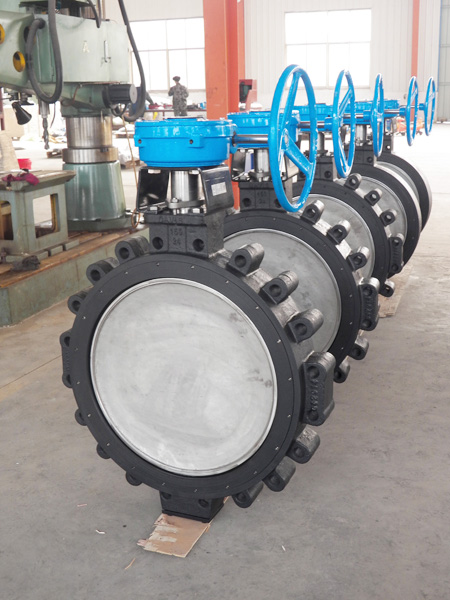
Overview of common materials used in butterfly valve seat material manufacturing
The choice of material used in butterfly valve seat material manufacturing depends on the specific application’s requirements. Common materials used for butterfly valve seats include elastomeric materials, thermoplastic materials, and metallic materials. Elastomeric materials such as natural rubber, ethylene propylene diene monomer (EPDM), nitrile rubber (NBR), and fluoroelastomers (FKM) are widely used due to their excellent flexibility, chemical resistance, and durability. Thermoplastic materials such as polyvinyl chloride (PVC), polypropylene (PP), and polytetrafluoroethylene (PTFE) are commonly used in applications involving corrosive fluids, and they offer high-temperature resistance and chemical compatibility. Metallic materials such as stainless steel and alloy-based materials like Inconel and Hastelloy are ideal for high-pressure and high-temperature applications, and they provide exceptional resistance to extreme temperatures and corrosive fluids. Overall, the choice of material depends on various factors such as operating temperature range, pressure rating, chemical compatibility, wear and abrasion resistance, and cost. It is essential to consider these factors when selecting the right material for butterfly valve seats to ensure optimal valve functionality and longevity.
Factors to Consider in Selecting Butterfly Valve Seat Material
Selecting the right material for a valve seat is crucial in ensuring optimal valve performance and longevity. The following factors should be considered when selecting materials for valve seats:
- Operating temperature range: The material used for the valve seat should be able to withstand the specific application’s operating temperature range without degrading or losing its mechanical properties.
- Pressure rating: The material used for the valve seat should be able to withstand the system’s pressure without deforming or experiencing fatigue failure.
- Chemical compatibility: The valve seat material should be resistant to the specific fluid or media that flows through the valve. This prevents chemical reactions that can cause corrosion, erosion, or degradation of the valve seat.
- Wear and abrasion resistance: The valve seat material should be able to withstand wear and abrasion caused by the valve disc moving against it during opening and closing operations.
- Cost and material availability: The cost and availability of the material used for the valve seat should be considered to ensure that the valve is not only efficient but also cost-effective.
Overall, the selection of valve seat materials depends on the specific application’s requirements, and it is essential to consult with industry experts and valve manufacturers when selecting the right material for specific applications.
Operating temperature range
Operating temperature range is a crucial factor to consider when choosing materials for valve seats. Different materials have varying levels of thermal resistance, and selecting a material that can withstand a specific application’s temperature range is essential in ensuring optimal valve performance and longevity. The temperature range should be within the specified limits of the material’s thermal properties to prevent the material from degrading or melting, which can affect the valve seat’s functionality. For example, elastomeric materials such as natural rubber and EPDM are suitable for low-temperature applications, while materials like PTFE and metallic alloys like Inconel and Hastelloy are better suited for high-temperature applications. In addition, it is essential to consider the temperature fluctuations that the valve may experience during operation and select materials that can handle these fluctuations without losing their mechanical properties. Therefore, it is essential to choose materials that can withstand a specific application’s operating temperature range to ensure optimal valve performance and longevity.

Pressure rating
Pressure rating is another critical factor to consider when selecting valve components. The pressure rating refers to the maximum pressure that a material can withstand without failing or leaking. It is measured in pounds per square inch (PSI) or bars. It is crucial to select valve components with a pressure rating that exceeds the maximum pressure that the system will encounter during operation. If the pressure rating of the valve component is too low, it can lead to failure or leakage, which can result in system shut down and significant safety hazards. Different materials have varying levels of pressure resistance, and it’s essential to choose the right material for each component, such as the valve body, trim, and gaskets. Understanding the pressure requirements of the application is key to selecting the right components with sufficient pressure rating to ensure system safety and optimal performance.
Chemical compatibility
Chemical compatibility is a crucial factor to consider when selecting materials for valve components. The valve components must be resistant to the chemicals that they will interact with during operation. Failure to choose materials that are chemically compatible can result in corrosion, degradation, and reduced valve performance. When selecting materials, it’s essential to consider the type of fluid or gas that will pass through the valve, as well as the temperature and pressure level. Different materials have varying levels of chemical resistance, and it’s important to choose materials that will not react negatively with the media or degrade over time due to chemical exposure. Some materials such as stainless steel, Teflon, and Hastelloy are highly resistant to chemical corrosion and are suitable for most industrial applications. Prioritizing chemical compatibility in valve component selection can ensure long-lasting valve performance and reduce the need for frequent maintenance or replacement.
Wear and abrasion resistance
Wear and abrasion resistance are vital factors to consider when selecting valve components. The valve components must be capable of withstanding the abrasive forces that they will encounter during operation. Wear and abrasion can cause damage to valve components, leading to reduced valve performance, leakage, and ultimately, system failure. When selecting materials for valve components, it is essential to consider their wear and abrasion-resistant properties, as well as the type of media that will pass through the valve. For instance, materials like ceramic, tungsten carbide, and Stellite are highly resistant to abrasion and are suitable for applications where the fluid or gas contains abrasive particles. Choosing materials with high wear and abrasion-resistant properties can help ensure optimal valve performance and reduce the need for frequent maintenance or replacement, resulting in a more efficient and reliable system.
Cost and material availability
Cost and material availability are important factors to consider when selecting valve components for a specific application. Balancing the budgetary constraints with the need for high-quality, reliable materials is crucial in ensuring optimal valve performance and longevity. The cost of materials can vary widely, depending on factors such as their chemical resistance, temperature tolerance, and wear and abrasion resistance properties. It is essential to evaluate the cost-effectiveness of materials based on their suitability for the intended application. Material availability is another significant consideration, as it can impact the lead time and overall project timeline. Selecting materials that are readily available and easy to source can help reduce delays and ensure smooth project execution. Ultimately, finding the right balance between cost, material availability, and performance requirements is key to making an informed decision when choosing valve components, ensuring the best possible outcome for both the project and its stakeholders.
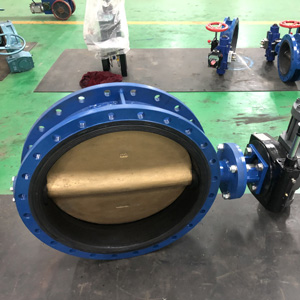
Commonly Used Materials in Pneumatic Butterfly Valve Seat material Manufacturing
Butterfly valve seat material are an essential component in controlling the flow of fluids and gases in various industrial applications. The selection of materials used in manufacturing these valve seats is critical in ensuring optimal performance, durability, and reliability. Some of the most commonly used materials in butterfly valve seat manufacturing include elastomers, thermoplastics, and composites. Elastomeric materials, such as natural rubber, EPDM, and Nitrile rubber (NBR), are popular choices due to their flexibility, excellent sealing capabilities, and resistance to a wide range of chemicals. These elastomers are suitable for low-temperature applications and provide good wear resistance, making them ideal for water, air, and other general-purpose applications.
Thermoplastic materials, such as Polytetrafluoroethylene (PTFE) and PolyEtherEtherKetone (PEEK), are also frequently used in butterfly valve seat manufacturing. These materials offer exceptional chemical compatibility, high-temperature resistance, and low friction, making them suitable for more demanding applications involving corrosive or high-temperature media. PTFE, in particular, is known for its versatile performance across a broad range of temperatures and resistance to most chemicals, making it a popular choice for many industries.
Composite materials, which combine the desirable properties of various materials, have also gained popularity in butterfly valve seat manufacturing. For example, a combination of PTFE and stainless steel or other metallic reinforcements can provide enhanced strength, wear resistance, and temperature tolerance compared to using PTFE alone. These composite materials can be tailored to meet specific application requirements and offer a balance between performance and cost-effectiveness.
In addition to the materials mentioned above, specialized alloys and coatings may also be employed to improve the performance characteristics of butterfly valve seats. For instance, materials like Inconel and Hastelloy can be used for high-temperature and highly corrosive applications, while coatings such as hard chrome or Stellite can improve wear resistance and extend the life of the valve seat.
Ultimately, the choice of material for butterfly valve seat material manufacturing depends on the specific requirements of the application, such as operating temperature range, pressure rating, chemical compatibility, wear and abrasion resistance, and cost considerations. Selecting the appropriate material for each application is crucial in ensuring reliable performance and long-lasting durability, leading to a more efficient and effective fluid control system.
Elastomeric Materials
Elastomeric materials are a class of polymers that exhibit elastic properties, allowing them to return to their original shape after being stretched or deformed. These materials play a vital role in various industries due to their flexibility, resilience, and ability to form effective seals. Some common elastomers include natural rubber, EPDM (ethylene propylene diene monomer), Nitrile rubber (NBR), and silicone rubber. Each of these materials has its unique set of properties, making them suitable for different applications. For instance, natural rubber offers excellent tensile strength, abrasion resistance, and low-temperature flexibility, making it ideal for general-purpose applications. EPDM, on the other hand, is known for its outstanding resistance to weathering, ozone, and a wide range of chemicals, making it suitable for outdoor and chemical processing applications. Nitrile rubber exhibits excellent oil and fuel resistance, which is essential in automotive and aerospace industries. Silicone rubber is favored for its high-temperature resistance and biocompatibility, making it well-suited for medical and food-grade applications. Overall, elastomeric materials provide a versatile and cost-effective solution for various sealing and vibration dampening needs across multiple industries.

Thermoplastic Materials
Thermoplastic materials are a class of polymers that can be repeatedly melted and solidified without significant degradation, making them easily moldable and recyclable. These materials offer a wide range of desirable properties, such as high strength, chemical resistance, and dimensional stability, making them suitable for various applications across multiple industries. Some common thermoplastics include Polyethylene (PE), Polypropylene (PP), Polyvinyl chloride (PVC), Polystyrene (PS), and engineering plastics like PolyTetraFluoroEthylene (PTFE) and PolyEtherEtherKetone (PEEK). Each of these materials has unique characteristics that make them suitable for specific applications. For instance, PE and PP are known for their excellent chemical resistance and low cost, making them ideal for packaging, piping, and automotive components. PVC is favored for its durability and resistance to weathering, making it suitable for construction and outdoor applications. Engineering plastics like PTFE and PEEK offer exceptional temperature and chemical resistance, low friction, and high mechanical strength, making them ideal for demanding applications in industries such as aerospace, medical, and electronics. Overall, thermoplastic materials provide a versatile and sustainable solution for a wide range of applications, offering both performance and environmental benefits.
Metallic Materials
Metallic materials are a class of materials characterized by their metallic bonding, high electrical and thermal conductivity, and lustrous appearance. These materials exhibit a wide range of properties, such as strength, ductility, and corrosion resistance, making them suitable for various applications across multiple industries. Some common metallic materials include aluminum, copper, steel, stainless steel, and specialized alloys like Inconel, Hastelloy, and Titanium. Each of these materials has unique characteristics that make them suitable for specific applications. For instance, aluminum is known for its lightweight, high strength-to-weight ratio, and excellent corrosion resistance, making it ideal for aerospace and automotive components. Copper is favored for its high electrical conductivity and thermal conductivity, which is essential in electrical wiring and heat transfer applications. Steel and stainless steel offer a balance of strength, durability, and cost-effectiveness, making them suitable for structural and industrial applications. Specialized alloys like Inconel, Hastelloy, and Titanium provide exceptional performance in extreme conditions, such as high temperatures, corrosive environments, and high-pressure situations, making them ideal for aerospace, chemical processing, and medical applications. Overall, metallic materials provide a versatile and reliable solution for a wide range of applications, offering both performance and durability.
Selection Criteria for Valve Seat Materials
The selection of valve seat materials is a critical aspect of valve design, as it directly impacts the performance, reliability, and longevity of the valve. A variety of factors must be considered when choosing the appropriate material for a specific application. First and foremost, the operating conditions, such as temperature range, pressure rating, and flow rate, must be taken into account to ensure the chosen material can withstand these conditions without compromising its sealing capabilities. Materials with high thermal stability, for example, are necessary for high-temperature applications, while materials with excellent chemical resistance are crucial in handling corrosive media.
Another essential factor to consider is the compatibility of the valve seat material with the fluid or gas passing through the valve. The material should not only resist degradation or corrosion caused by the media but also prevent contamination or reactions that could compromise the fluid’s quality or the process’s integrity. For instance, elastomeric materials like EPDM and Nitrile rubber offer excellent chemical resistance to a wide range of fluids, while thermoplastics like PTFE and PEEK provide exceptional chemical compatibility and low friction for more demanding applications.

Wear and abrasion resistance are also important considerations, particularly in applications where the valve will be subjected to frequent or high-speed operation, or where the fluid contains abrasive particles. Materials like ceramic, tungsten carbide, and Stellite are highly wear-resistant and suitable for such applications.
Cost and material availability are other significant factors that cannot be overlooked. Balancing budgetary constraints with the need for high-quality, reliable materials is essential in ensuring optimal valve performance and longevity. Material availability can impact lead times and project timelines, so selecting materials that are readily available and easy to source is crucial in reducing potential delays.
Furthermore, regulatory requirements and industry-specific standards may dictate the choice of valve seat materials in certain applications. For example, materials used in food processing, pharmaceutical, or medical applications must meet specific standards for hygiene, biocompatibility, and chemical resistance.
In summary, selecting the appropriate valve seat material involves a careful evaluation of various factors, including operating conditions, media compatibility, wear and abrasion resistance, cost, material availability, and industry-specific requirements. By considering these factors, engineers can make informed decisions that ensure reliable performance and long-lasting durability for the valve, ultimately leading to a more efficient and effective fluid control system.
Guidelines on matching seat material to specific applications
When matching seat material to specific applications, it is crucial to follow a set of guidelines that take into account the unique requirements and operating conditions of each application. First, consider the type of media being handled, as well as its temperature, pressure, and chemical composition. This will help determine the required properties for the seat material, such as chemical compatibility, thermal stability, and resistance to wear and abrasion. Next, evaluate the frequency and mode of operation of the valve, as this can impact the material’s durability and service life. For applications involving frequent or high-speed operation, opt for materials with high wear resistance and fatigue strength.
Additionally, consider any industry-specific standards or regulatory requirements that may apply to the application. For instance, food processing, pharmaceutical, and medical industries often have stringent guidelines regarding hygiene, biocompatibility, and chemical resistance. Ensure that the chosen material meets these requirements to guarantee safety and compliance.
Cost and material availability should also be taken into account, as they can have a significant impact on project timelines and budgets. Strive to find a balance between cost-effectiveness and performance by selecting materials that offer the required properties at a reasonable price while being readily available in the market.
Finally, consult with material experts, engineers, and valve manufacturers to gain insights and recommendations on the most suitable seat materials for your specific application. By following these guidelines and considering all relevant factors, you can make an informed decision that ensures optimal valve performance, reliability, and longevity in your application.
Importance of consulting with valve manufacturers and industry experts
Consulting with valve manufacturers and industry experts is of paramount importance when selecting materials and designing valves for specific applications. These professionals possess extensive knowledge, experience, and insights into the properties of various materials, their compatibility with different media, and their performance under diverse operating conditions. By collaborating with these experts, you can tap into their expertise to make informed decisions that align with your application’s unique requirements, ensuring optimal valve performance, reliability, and longevity. Furthermore, consulting with valve manufacturers and industry experts helps identify potential challenges and pitfalls early in the design process, which can save time, resources, and costs by avoiding costly mistakes and redesigns. Additionally, these experts can provide valuable guidance on industry-specific standards, regulatory requirements, and best practices, ensuring compliance and safety. In summary, engaging with valve manufacturers and industry experts is a crucial step in the valve selection and design process, as it contributes to the development of efficient, effective, and reliable fluid control systems tailored to meet the demands of each specific application.
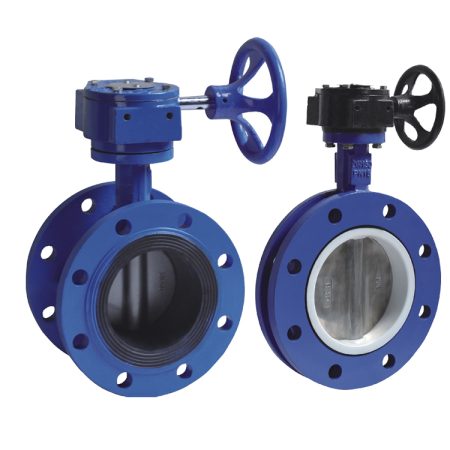
Conclusion
In conclusion, butterfly valve seat material manufacturing involves the use of various materials, each offering unique properties and benefits that make them suitable for different applications and industries. Understanding the common materials used in butterfly valve seat manufacturing is essential to ensure the optimal performance, reliability, and durability of the valves in their respective applications.
Some of the most common materials used in butterfly valve seat manufacturing include:
- Elastomeric materials such as natural rubber, EPDM, Nitrile rubber, and silicone rubber. These materials provide excellent flexibility, resilience, and sealing capabilities, making them ideal for general-purpose applications, outdoor environments, and food-grade or medical applications.
- Thermoplastic materials like Polyethylene (PE), Polypropylene (PP), Polyvinyl chloride (PVC), Polystyrene (PS), and engineering plastics such as PolyTetraFluoroEthylene (PTFE) and PolyEtherEtherKetone (PEEK). These materials offer a wide range of desirable properties, including high strength, chemical resistance, and dimensional stability, making them suitable for various applications, including those that involve corrosive media or require low friction and exceptional chemical compatibility.
- Metallic materials such as aluminum, copper, steel, stainless steel, and specialized alloys like Inconel, Hastelloy, and Titanium. These materials provide strength, durability, and resistance to various environmental factors, making them ideal for applications that demand high-performance under extreme conditions, such as aerospace, chemical processing, and medical industries.
When selecting the appropriate material for wafer butterfly valve seat manufacturing, it is crucial to consider factors such as operating conditions, media compatibility, wear and abrasion resistance, industry-specific requirements, cost, and material availability. By doing so, you can ensure that the chosen material aligns with your specific application’s needs and contributes to the overall efficiency and effectiveness of your fluid control system.
Moreover, consulting with valve manufacturers and industry experts is essential during the material selection process. Their knowledge and experience can provide valuable insights and recommendations on the most suitable materials for your specific application, ensuring that your butterfly valves perform optimally and provide long-lasting service.
In summary, understanding the common materials used in butterfly valve seat manufacturing and their unique properties is key to ensuring optimal valve performance, reliability, and durability across various industries and applications. By carefully considering factors such as operating conditions, media compatibility, and industry requirements, and collaborating with industry experts, you can make informed decisions that lead to efficient and effective fluid control systems tailored to meet the demands of each specific application.
Recap on the significance of selecting the right material for butterfly valve seats
In recap, selecting the right material for butterfly valve seat material is of utmost significance, as it directly impacts the valve’s performance, reliability, and durability in its specific application. The appropriate material ensures proper sealing, compatibility with the media being handled, and resistance to wear, abrasion, and corrosion. By considering factors such as operating conditions, media compatibility, industry-specific requirements, cost, and material availability, you can make informed decisions that not only optimize the valve’s performance but also contribute to the overall efficiency and effectiveness of your fluid control system. Furthermore, consulting with valve manufacturers and industry experts during the material selection process provides valuable insights and guidance, helping you choose the most suitable material tailored to the unique demands of each application. In essence, selecting the right material for butterfly valve seats is a critical aspect of valve design, ultimately leading to successful fluid control systems across various industries and applications.
Emphasis on considering factors such as temperature, pressure, and fluid compatibility
Emphasizing the consideration of factors such as temperature, pressure, and fluid compatibility is crucial in the selection of valve seat materials for any application. These factors play a significant role in determining the material’s suitability to withstand the specific operating conditions without compromising its sealing capabilities or service life. Materials with high thermal stability are essential for high-temperature applications, while those with excellent chemical resistance are vital for handling corrosive media. The ability of the material to maintain its integrity under varying pressure levels is also of paramount importance, ensuring that the valve operates effectively across the entire range of pressures encountered in the application. By carefully evaluating these factors in conjunction with other relevant criteria, you can make informed decisions that lead to the selection of the most appropriate valve seat material, ultimately enhancing the performance, reliability, and longevity of your fluid control system.

Encouragement to consult with professionals for proper material selection in specific applications
It is highly encouraged to consult with professionals, such as valve manufacturers and industry experts, for proper material selection in specific applications. These professionals possess extensive knowledge and experience in valve design and can provide invaluable guidance on choosing the most suitable materials based on the unique requirements and operating conditions of each application. By collaborating with these experts, you not only benefit from their expertise but also ensure that your chosen materials align with industry-specific standards, regulatory requirements, and best practices. This collaborative approach helps avoid potential pitfalls and costly mistakes, ultimately leading to the development of efficient, effective, and reliable fluid control systems tailored to meet the demands of each specific application. In essence, consulting with professionals is a vital step in the material selection process, contributing to the overall success of your valve design and the performance of your fluid control system.




